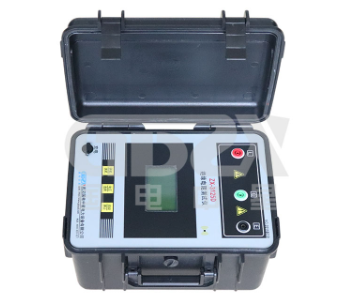NEWSnews
The influencing factors and precautions of insulation resistance measurement
The impact of external insulation surface leakage
Generally, the test should be conducted under conditions where the relative humidity of the air is not higher than 80%. In humid weather where the relative humidity is greater than 80%, an extremely thin layer of water film will condense on the surface of the ceramic sleeve of the electrical equipment lead wire, causing a surface leakage channel and a significant decrease in insulation resistance. At this time, according to the wiring diagram in the manual, a shielding ring should be installed on the lead wire sleeve of the test object (tightly tied with thin copper wire or fuse for several turns to make it in close contact with the outer surface of the lead wire sleeve), and connected to the shielding terminal of the megohmmeter. The shielding ring should be connected to the lead out bushing terminal near the high voltage end of the megohmmeter, away from the grounding part, to avoid overloading the megohmmeter, causing a sharp decrease in terminal voltage, and affecting the measurement results.

The influence of residual charges
If the grounding discharge time t of the test sample is not sufficient after the previous test, and the accumulated charge in the insulation is not discharged completely, there is still a certain residual charge, which will directly affect the insulation resistance, absorption ratio, and polarization index values. The insulation resistance of a generator is measured first and then subjected to different discharge times before retesting. It can be seen that grounding discharge for at least 5 minutes is necessary to obtain more accurate results.
When conducting cross-linked cable tests, it should be noted that due to the influence of residual charges, there may be significant changes in insulation resistance before and after cable withstand voltage (especially DC withstand voltage), and the discharge time should be sufficiently long.
When measuring the stator insulation resistance of a three-phase generator in separate phases, after testing the first phase winding, it should also be fully discharged for more than 5 minutes before opening the grounding wire of the second phase winding to test the second winding. Otherwise, the phenomenon of low measured insulation resistance due to incomplete discharge of opposite polarity charges between adjacent phases will also occur.
The influence of induced voltage
Measure the insulation resistance of high-voltage overhead lines. If there is a parallel section between the line and another live line, the measurement cannot be carried out to prevent static induced voltage from endangering personal safety, and to prevent power frequency induced current from flowing through the megohmmeter, making the measurement impossible. When measuring the insulation resistance of high-voltage electrical equipment near the high-voltage busbar of substations and booster stations, if the induced voltage on the tested equipment is too high, it will also have a significant impact on safety and test results.
When lightning activities have an impact on overhead lines, insulation resistance measurement of the line cannot be carried out.
The influence of temperature
When measuring insulation resistance, the temperature of the test sample should generally be between 10~40 ℃. The insulation resistance decreases with increasing temperature, but there is currently no universal fixed conversion formula. The temperature conversion coefficient is best determined by actual measurement. For example, under normal conditions, when the equipment stops running and cools down on its own, the insulation resistance value can be measured at different temperatures to calculate its temperature conversion coefficient.
Judgment of measurement results
The measurement of insulation resistance value is the most basic item in routine testing projects. Based on the measured insulation resistance value, the insulation condition of the equipment can be preliminarily estimated, and it is usually determined whether other insulation test items with applied voltage can be continued. In DT596, regarding insulation resistance standards, except for a few relatively simple structures and some low-voltage equipment that have specified minimum values, the insulation resistance values of most high-voltage electrical equipment are not specified or self specified.
In addition to the measured insulation resistance value being very low, and the tester believes that the insulation of the equipment is poor, in general, the tester should compare the insulation resistance values of different phases under the same conditions without significant differences, or compare the results of previous tests on the same equipment (converted to the same temperature under possible conditions) without significant reductions (such as reducing to 70%), and make a comprehensive judgment based on other test results. When necessary, decompose and measure each part of the test object separately (connect the non measured part to the shielding end) to facilitate the analysis of the defect area.
Verification of Megohmmeter
The megohmmeter should be inspected once a year, and the comparison results should meet the requirements of JJG622.
GDZX is a professional manufacturer of secondary protection testing equipment, with a wide variety of instrument and equipment types to choose from. GDZX serves you at 4000-828-027. To learn more, visit GDZX's official website at www.gdzxdl.com.





















